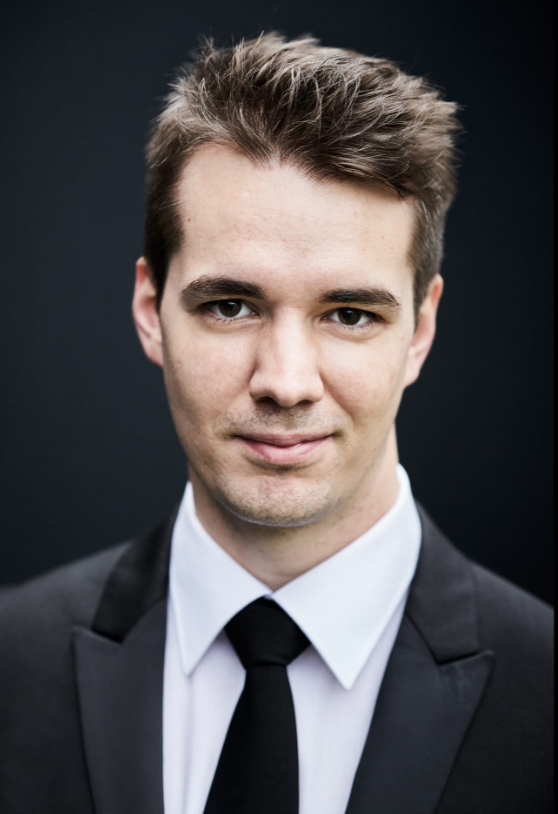






DANIEL LEBHARDT


Tuesday 21 October 2025 at 7:30 pm at
St Mary's Church, Barnes
Daniel Lebhardt - piano
Programme
Beethoven Sonata in D minor, Op.31 No.2 (Tempest) (24’)
Schumann Gesänge der Frühe (Songs of the Morning), Op.133 (15’)
Chopin Scherzo No.1 in B minor, Op.20 (9’)
—
Liszt Funérailles, No.7 from Harmonies poétiques et religieuses, S.173 (11’)
Chopin Sonata No.3 in B minor, Op.58 (27’)
Hungarian pianist Daniel Lebhardt has been described by the New York Times as playing with ‘...power, poetry and formidable technique’.
This season Daniel makes multiple appearances at Wigmore Hall, including a coffee concert with the violinist Benjamin Baker and a solo recital. This summer he will be performing at the North Norfolk and North York Moors Chamber Music Festivals, and he starts the next season with a return to Ireland for his debut at New Ross Festival, and a solo recital in Galway.
Since becoming one of the winners at the 2015 Young Classical Artist Trust auditions, he has given recitals at Luxembourg Philharmonie, the National Philharmonic of Ukraine, Auditorium du Louvre in Paris, Kennedy Center in Washington DC and Merkin Concert Hall in New York City, at the Tallinn, Lucerne, Chorinner Musiksommer, Heidelberger-Frühling International festivals, and in Canada, China, Japan, Colombia, Argentina, Chile and most recently in New Zealand at the World`s Edge Festival. In the UK he performed at Saffron Hall, at the Aldeburgh, Harrogate, Bath International Festivals, and Birmingham and Nottingham International Piano Festivals.
Last year Daniel performed Beethoven's “Emperor Concerto” in Guildford and Mozart's Concerto in C major K.467 at Royal Festival Hall with the Royal Philharmonic Orchestra. He performed Liszt’s Totentanz with Konzerthausorchester Berlin and made his debut with Bilkent Symphony Orchestra performing Brahms Piano Concerto No. 1. He also performed Beethoven with the Hallé Orchestra in Blackburn, Rachmaninoff's 3rd Concerto with the National Philharmonic of Ukraine and Mozart with the European Union Chamber Orchestra and debuted at Barbican Hall, and Birmingham Symphony Hall as soloist.
An avid chamber musician, Daniel regularly collaborates with Benjamin Baker and the Castalian Quartet, is a member of the Northern Chords Ensemble founded by Jonathan Bloxham, and has performed with violinist Charlotte Scott, violists Timothy Ridout, Rosalind Ventris and Scott Dickinson, cellists Alice Neary, Brian O`Kane clarinetists Mark van de Wiel, Julian Bliss and Matt Hunt and horn player Ben Goldscheider among others. He has also worked with composers Matthew Kaner, Brian Elias and Stephen Hough.
Daniel and Benjamin Baker have recently released two critically acclaimed albums with Delphian focusing on music of the 20th century, and both participated on Matthew Kaner’s album for the same label. Daniel was also given the opportunity to release a selection of Schubert dances with NAXOS, and to record music by Bartók for Decca He has won multiple international prizes including 1st Prize at the Young Concert Artists auditions in Paris and New York and in 2016 the Most Promising Pianist prize at the Sydney International Competition.
Daniel studied at the Franz Liszt Academy, the Royal Academy of Music and the Royal Birmingham Conservatoire. He is based in London.